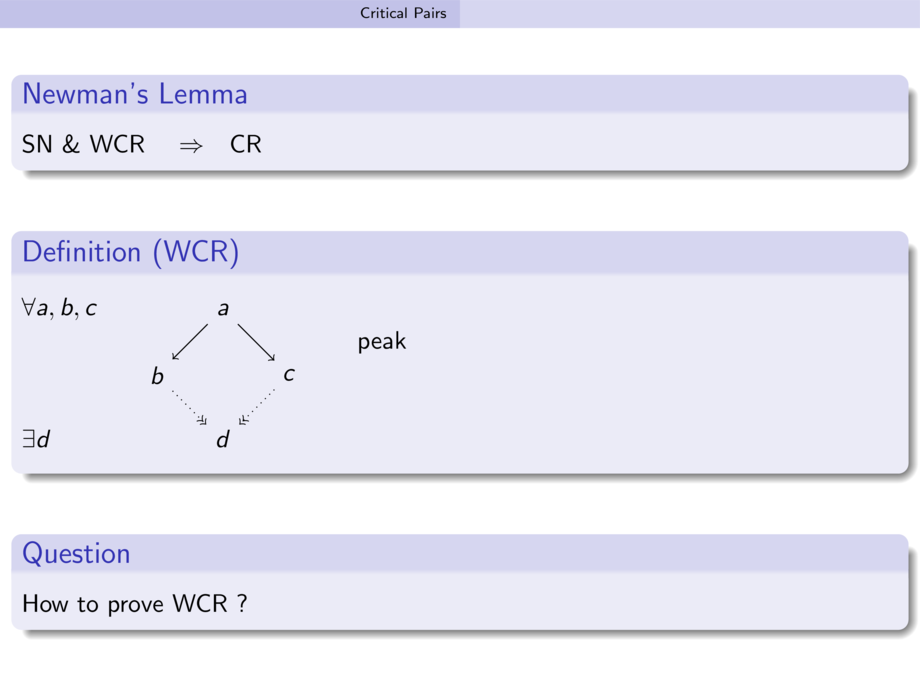
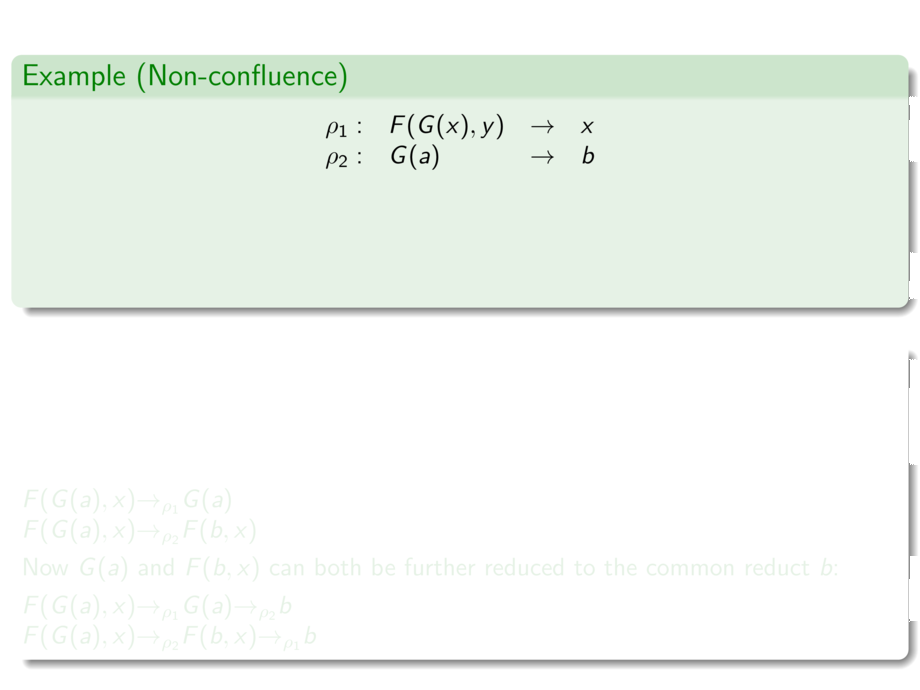
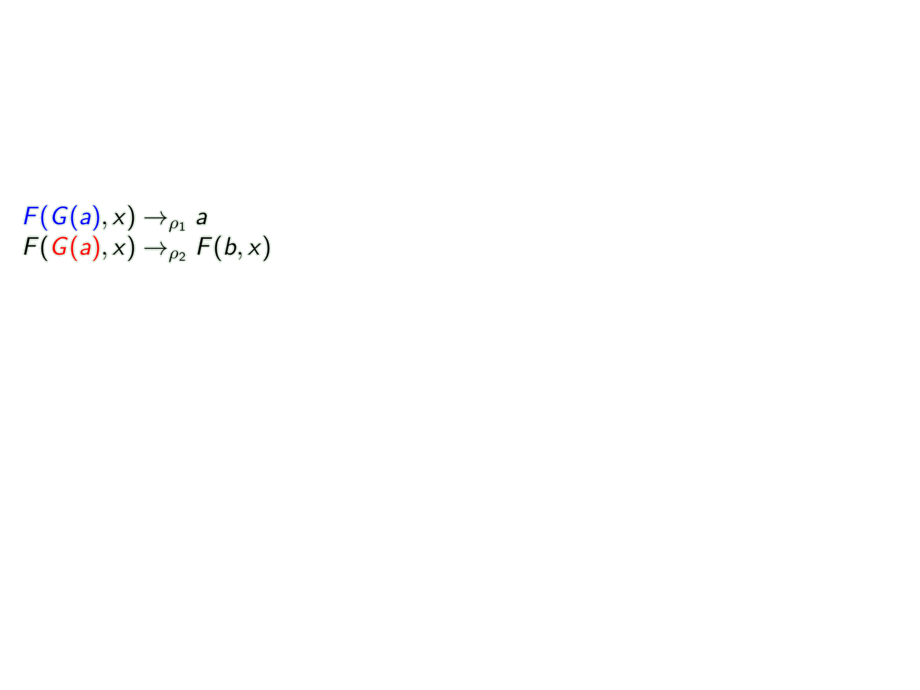
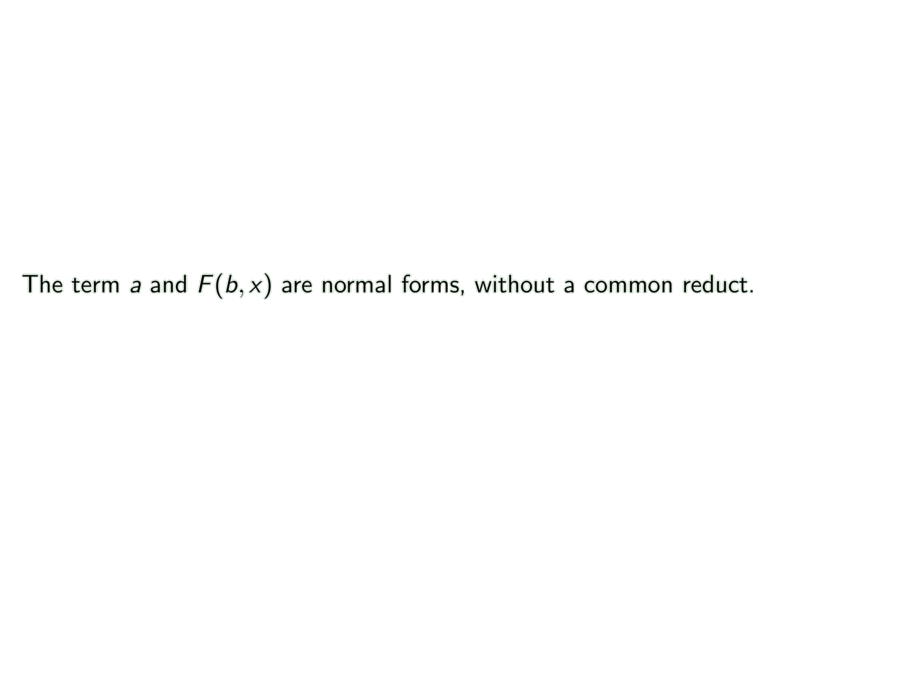
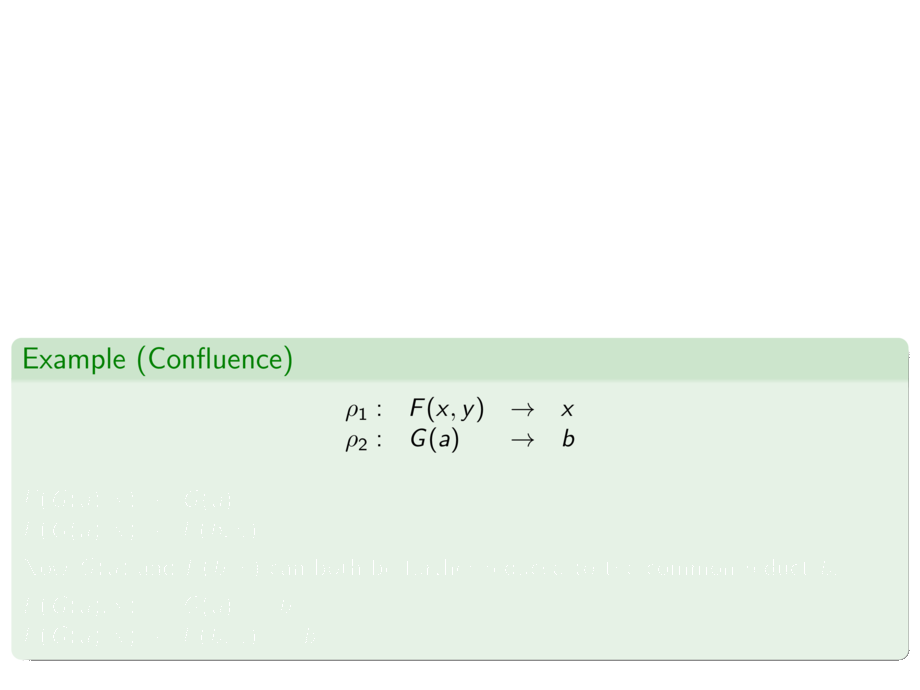
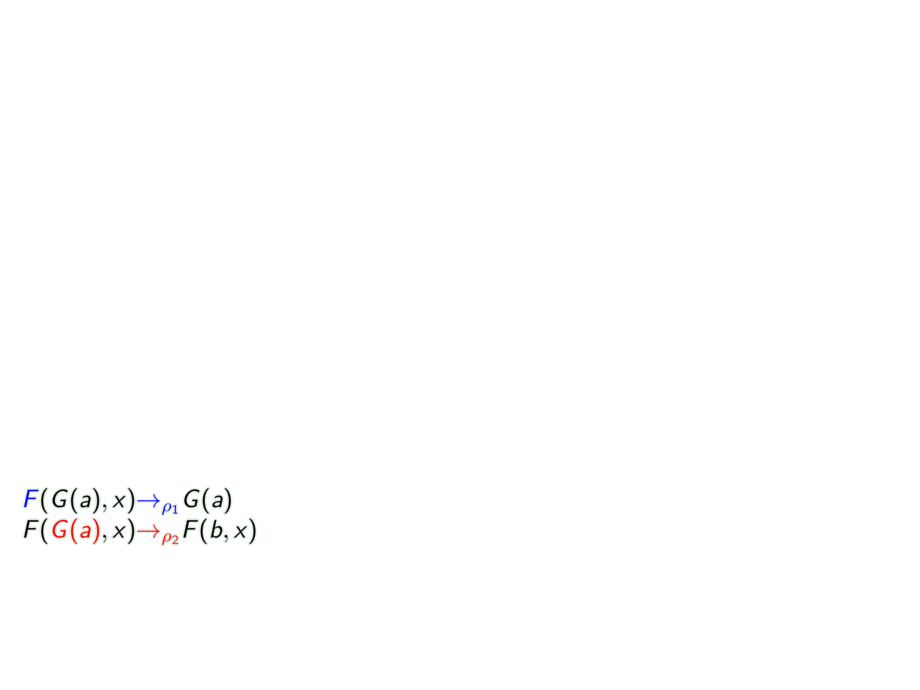
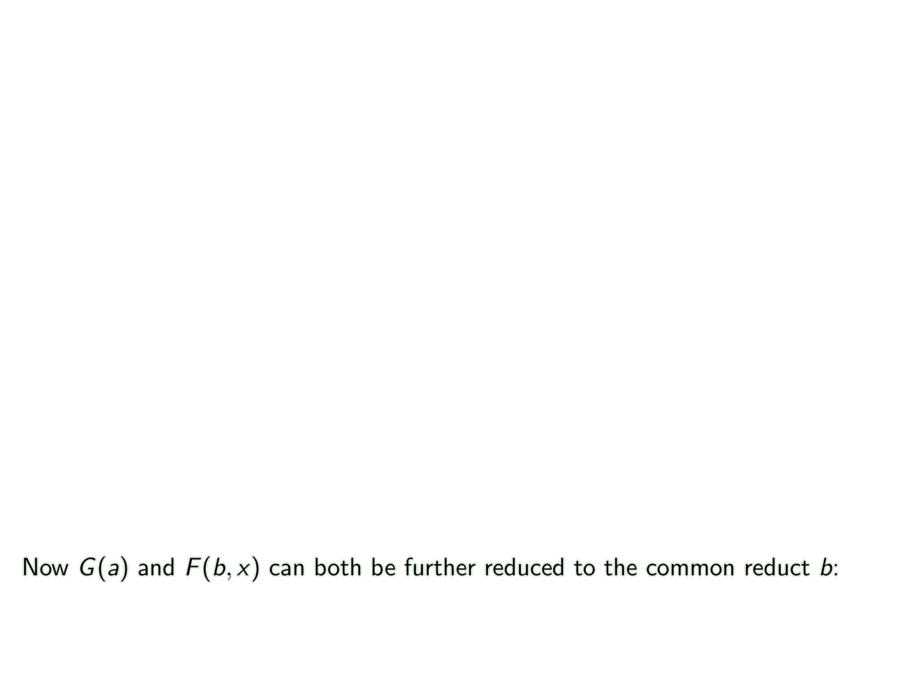





























































































58/205
\begin{frame}
\small
\begin{example}[Non-confluence]
\[
\begin{array}{llcl}
\rho_1:& F(G(x),y) &\to&x\\
\rho_2:& G(a) &\to &b
\end{array}
\]\pause
$\textcolor{blue}{F(G(a)},x) \to_{\rho_1} a$
$F(\textcolor{red}{G(a)},x) \to_{\rho_2} F(b,x)$\pause
\smallskip
The term $a$ and $F(b,x)$ are normal forms, without a common reduct.
\end{example}
\pause
\begin{example}[Confluence]
\[\begin{array}{llcl}
\rho_1:& F(x,y) &\to&x\\
\rho_2:& G(a) &\to &b
\end{array}\]\pause
$\textcolor{blue}{F}(G(a),x) \textcolor{blue}{\to_{\rho_1}} G(a)$
$F(\textcolor{red}{G(a)},x) \textcolor{red}{\to_{\rho_2}} F(b,x)$\pause
\smallskip
Now $G(a)$ and $F(b,x)$ can both be further reduced to the common reduct $b$:\pause
\smallskip
$\textcolor{blue}{F}(\textcolor{red}{G(a)},x)
\textcolor{blue}{\to_{\rho_1}}
\textcolor{red}{G(a)} \textcolor{red}{\to_{\rho_2}} b$\pause
$\textcolor{blue}{F}(\textcolor{red}{G(a)},x)
\textcolor{red}{\to_{\rho_2}}
\textcolor{blue}{F}(b,x)
\textcolor{blue}{\to_{\rho_1}} b$
\end{example}
\end{frame}

